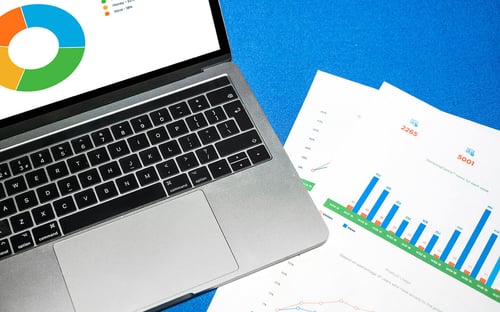5 min read
Welcome back to our HR Heroes series! Last time we chatted with Miriam Wallace, SPHR at Presbyterian Homes, about building a reward and recognition budget, addressing common challenges that many organizations face (like employee turnover), and proving the ROI of your engagement initiatives.
But after you’ve secured your budget, your work is just getting started.
It’s key to understand how these new initiatives will impact your organization in the long-term and improve your company culture. Let’s uncover how Miriam and the team at Presbyterian Homes engage a modern workforce by listening to invaluable employee feedback, providing the right recognition tools and involving leadership.

Q: Miriam, when you think about the different ways you’ve been successful in driving employee engagement at Presbyterian Homes, what methods have worked best for your organization?
Miriam: Well, no one's going to be surprised. There is not just one particular method. We have four different communities, which is a common theme among senior living organizations. Our product is our service. And the behaviors we exhibit are very important because that’s what we do every day but it can be easy to get caught up in the operation and not take the time to analyze or reflect on behaviors.
There are many different levers that we have to pull to make sure we’re demonstrating the behaviors that represent our core values. Our recognition program is a huge part of that. We have Stand-Up meetings where teams meet with their manager for a few minutes each morning or at the beginning of a shift to talk through organization and department updates. At least once a week, a recognition that has been submitted by or for one of the team members is shared at the stand-up meeting.
We know that people appreciate being recognized, but when their manager reads it and adds comments on it, it’s even more powerful.
Plus, in the Stand-Up meetings, the recognition is shared with other team members and that encourages people to write more recognitions.

Q: You’re doing a great job of strategically recognizing your people and connecting it to your values and behaviors. Can you explain a little more about how you reward your people and incorporate that element as well?
Miriam: It’s almost a reward within itself to receive recognition, but our communities have a lot of fun with prizes and rewards on top of that. Once a month or so, we have town hall meetings and people share recognitions – the top two recognitions get a prize. Usually, this is determined through a voting system since it’s hard to distinguish which recognition is better than the other.
One of the prizes I really like is the “engaged parking spots,” which are near the door and perfect for cold Chicago winters. Another popular one is spa services. The point of these prizes is that they’re not big-budget items, but they mean a lot to our people and we listen to their feedback on what type of prizes they’d like.
The “ENGAGE” platform is a place where we collect employee feedback and empower peers to publicly recognize one another. But it’s important to realize this isn’t the only way we recognize each other. We are looking at ways to further engage team members in our recruiting, orientation and development processes, in an effort to embed employee recognition and appreciation into our culture.
Q: How do you use employee feedback to make sure these recognition and reward moments are hitting the mark and making an impact?
Miriam: It’s not enough to just do workshops at the beginning when you’re launching your employee recognition platform. You have to go out and meet with people at least once a year to get feedback on the program. The COO and I went out at the beginning of last summer and offered workshops to all employees.
We worked with people on different shifts and in different departments to get them comfortable with writing recognitions and sharing best practices tips. For some people it can be intimidating and they may not know how to write a strategic recognition message. We kept it really simple, shared a lot of examples and made people comfortable with it – even with sending recognition from their mobile phones.
After we took the time to listen and did these workshops with individuals, we saw a huge spike in recognition.

Q: And how do you make sure that you’re continuing to create an environment for continuous recognition that aligns with your values and behaviors?
Miriam: As I mentioned earlier, it’s not just the recognition program that helps drive behaviors – it’s also about using employee surveys, gathering feedback and then acting on that feedback. The COO and I have met with department heads and their managers in small workshops and reviewed the annual engagement survey results by department.
We developed an action plan to celebrate what has improved and an action to address any area that needs attention both across the community and the department, after working with employees to look at survey scores, the behaviors and what’s behind the behaviors.
It can be quite difficult to go through survey results and see exactly what it’s telling you. But we’ve worked together to come up with actions for each team or department, and then a broader one across the whole community as well. We’ve also integrated those behaviors that we want all of us to exhibit to support our values into performance management.
We’re planning on moving away from looking at annual performance to more regular touchpoints to support professional development opportunities within the organization.
It’s really about pulling on those different levers, incorporating feedback into recognition and working towards promoting desired behaviors. That’s how you work towards creating a culture of appreciation.
Ensuring that an employee recognition program is successful requires employee feedback. It’s important to periodically check in with your people to make sure your initiative is resonating and making an impact on their day-to-day lives.
Want to learn more about Miriam’s employee engagement journey? Watch the full webinar recording below.

%20(1).jpeg) Alexandra Powell
Alexandra Powell


